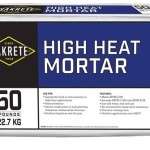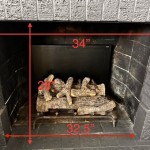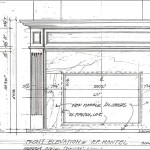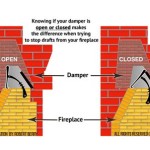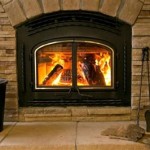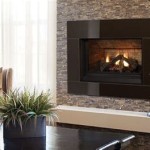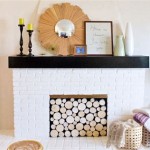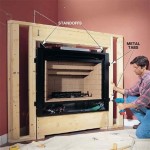See-Through Ventless Fireplace Inserts: A Comprehensive Overview
See-through ventless fireplace inserts represent a modern and versatile approach to home heating and aesthetic enhancement. These units offer a unique visual appeal, allowing flames to be viewed from two adjacent spaces, effectively creating a focal point that connects rooms while providing supplemental warmth. This article will delve into the intricacies of see-through ventless fireplace inserts, covering their operational principles, advantages, disadvantages, installation considerations, safety features, and maintenance requirements.
Ventless fireplace technology, in general, relies on the complete combustion of fuel, typically natural gas or propane, within the firebox. This process aims to minimize the production of harmful byproducts such as carbon monoxide. The defining characteristic of a ventless fireplace is the absence of a chimney or flue, which eliminates the need for extensive and costly venting systems. The combustion process is carefully engineered to burn fuel so cleanly that the resulting emissions are considered safe for indoor use, within established safety standards and limitations. See-through models extend this ventless technology by offering a dual-sided viewing experience, making them ideally suited for installation between living rooms and dining rooms, or other connected spaces within a home.
The aesthetic impact of a see-through ventless fireplace is significant. They provide an appealing alternative to traditional fireplaces, offering a contemporary look that can complement various interior design styles. Their dual-sided viewing feature creates a visual bridge between rooms, enhancing the sense of openness and connection within a home. The flames themselves become a dynamic art installation, providing warmth, ambiance, and a captivating focal point that draws the eye and sparks conversation. The availability of different firebox designs, media options (such as logs, glass beads, or stones), and frame finishes allows homeowners to customize the fireplace to perfectly match their individual tastes and décor.
Advantages of See-Through Ventless Fireplace Inserts
The appeal of see-through ventless fireplace inserts stems from a multitude of advantages that contribute to their growing popularity among homeowners and design professionals. These benefits extend beyond mere aesthetics and encompass practical considerations related to installation, cost-effectiveness, and energy efficiency.
One of the primary advantages is the ease of installation. Unlike traditional fireplaces, ventless models eliminate the need for extensive venting systems, significantly reducing the cost and complexity of the installation process. This makes them a particularly attractive option for renovations or additions where adding a chimney would be impractical or cost-prohibitive. The installation typically involves connecting the unit to a gas line (for natural gas or propane models) and ensuring proper clearance from combustible materials, as specified by the manufacturer's instructions and local building codes. While professional installation is recommended to ensure safety and compliance, the overall process is generally less disruptive and time-consuming compared to conventional fireplaces.
Cost-effectiveness is another significant benefit. The absence of venting requirements translates to lower upfront costs, as there are no chimney construction or modification expenses to consider. Furthermore, ventless fireplaces are often more energy-efficient than their vented counterparts. Because they do not require a chimney, they do not lose heat through the vent, resulting in more heat being retained within the room. This can lead to lower heating bills, especially when the fireplace is used as a supplemental heat source in conjunction with a central heating system. The combination of lower installation costs and improved energy efficiency makes see-through ventless fireplace inserts a financially sound choice for homeowners seeking to add warmth and ambiance to their homes.
The versatility of see-through ventless fireplace inserts is also noteworthy. They can be installed in a variety of locations within a home, provided that the space meets the manufacturer's requirements for room size and ventilation. This flexibility allows homeowners to integrate the fireplace seamlessly into their existing décor or to incorporate it into new construction plans. The dual-sided viewing feature further enhances their versatility, making them ideal for dividing and connecting spaces simultaneously. This adaptability makes them a valuable asset in interior design, offering a unique way to enhance the functionality and aesthetic appeal of a home.
Disadvantages and Safety Considerations
Despite their numerous advantages, see-through ventless fireplace inserts also have certain disadvantages that need careful consideration. While ventless technology has made significant strides in safety and efficiency, it is essential to understand the potential risks and limitations associated with these units.
One of the main concerns surrounding ventless fireplaces is the potential for indoor air quality issues. While the combustion process is designed to be clean, it is not perfect. Ventless fireplaces release small amounts of carbon monoxide, nitrogen dioxide, and water vapor into the room. Carbon monoxide is a colorless, odorless gas that can be harmful or even fatal in high concentrations. Nitrogen dioxide can irritate the respiratory system. Water vapor, while generally harmless, can contribute to increased humidity levels, which may lead to mold growth in poorly ventilated spaces. To mitigate these risks, it is crucial to adhere to all manufacturer's instructions regarding room size limitations and ventilation requirements. A carbon monoxide detector should always be installed in the room where the fireplace is located, and regular maintenance is essential to ensure proper combustion and minimize emissions.
Another potential disadvantage is the limited heating capacity of ventless fireplaces. They are typically designed as supplemental heat sources and are not intended to heat an entire home. Their heating output is measured in British thermal units (BTUs), and it is important to select a unit with a BTU rating appropriate for the size of the room where it will be installed. Overusing a ventless fireplace in an attempt to heat a larger space can lead to excessive humidity, increased emissions, and potential safety hazards. It is also important to consider the insulation of the room and the climate in which the home is located when determining the appropriate BTU rating.
Furthermore, the appearance of the flames in a ventless fireplace may not be as realistic as those in a traditional wood-burning or vented gas fireplace. The combustion process in ventless units is different, which can result in a less natural-looking flame pattern. While manufacturers have made improvements in this area, some homeowners may find the appearance of the flames to be less aesthetically pleasing than those in other types of fireplaces. It is advisable to view a working model of the fireplace before making a purchase to assess the flame quality and ensure that it meets personal preferences.
Installation and Maintenance Requirements
Proper installation and regular maintenance are crucial for ensuring the safe and efficient operation of see-through ventless fireplace inserts. Adhering to manufacturer's instructions and local building codes is paramount to prevent potential hazards and maximize the lifespan of the unit.
Installation should always be performed by a qualified professional, preferably one with experience installing ventless fireplaces. This ensures that the unit is properly connected to the gas line (for natural gas or propane models), that all safety features are functioning correctly, and that the fireplace meets all applicable building codes. The installation process typically involves securing the unit to the wall or firebox, connecting the gas line, and testing the fireplace for proper operation. It is important to ensure that the fireplace is installed in a well-ventilated space and that there is sufficient clearance from combustible materials, such as curtains, furniture, and wall coverings. The manufacturer's instructions will provide detailed guidelines on installation requirements, including minimum room size, ventilation requirements, and clearance distances.
Regular maintenance is essential for keeping a ventless fireplace in good working condition and minimizing the risk of malfunctions or safety hazards. Maintenance tasks typically include cleaning the burner assembly, inspecting the gas line for leaks, and checking the oxygen depletion sensor (ODS) for proper functionality. The burner assembly should be cleaned periodically to remove any debris or soot that may have accumulated. A soft brush and vacuum cleaner can be used for this purpose. The gas line should be inspected regularly for leaks using a soap and water solution. If any leaks are detected, the gas supply should be shut off immediately, and a qualified technician should be called to make repairs. The ODS is a critical safety feature that shuts off the gas supply if the oxygen level in the room drops below a certain threshold. It should be tested regularly to ensure that it is functioning correctly.
In addition to these routine maintenance tasks, it is also important to have the fireplace inspected periodically by a qualified technician. A professional inspection can identify potential problems that may not be apparent during routine maintenance, such as gas leaks, burner malfunctions, or carbon monoxide buildup. Regular professional inspections can help prevent costly repairs and ensure the long-term safety and reliability of the fireplace. It is advisable to follow the manufacturer's recommendations for inspection frequency and to keep a record of all maintenance and repairs performed on the unit.

Boulevard See Through 48 Inch Vent Free Linear Fireplace

Monessen Designer Ventfree See Thru Fireplace With Multi Side Log Set Fine S Gas

American Hearth Jefferson Vent Free Peninsula See Through Fireboxe Fireplaces Usa

Designer Lo Rider See Thru Vent Free Firebox Stacked Liner Monessen

18 Evening Embers See Thru Ventless Gas Fireplace Logs

Superior 43 Inch Single Sided Or See Thru Linear Direct Vent Gas Fireplace

Boulevard See Through 60 Inch Vent Free Linear Fireplace Fine S Gas

Double Sided Gas Logs Vented And Ventless Sets

Empire Rock Creek 30 See Thru Vent Free Gas Logs
Escape See Through Gas Fireplace Heat Glo
Related Posts

